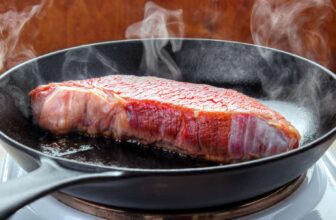What is Hamachi? – On the Line

Are you a lover of Japanese cuisine? If so, you may have had the chance to try Sashimi. But did you know there is another fish-based delicacy liked by many people called Hamachi? In this blog post, we’ll discuss what Hamachi is – from its special preparation method to why it’s gaining popularity among foodies worldwide!
We’ll also share some of our favorite ways to enjoy and serve Hamachi and tips for choosing quality cuts. So if you’re ready to get your hands on this delicious fare and learn more about ‘What is Hamachi’, stick around… it’s time to drop a line!
What is Hamachi?
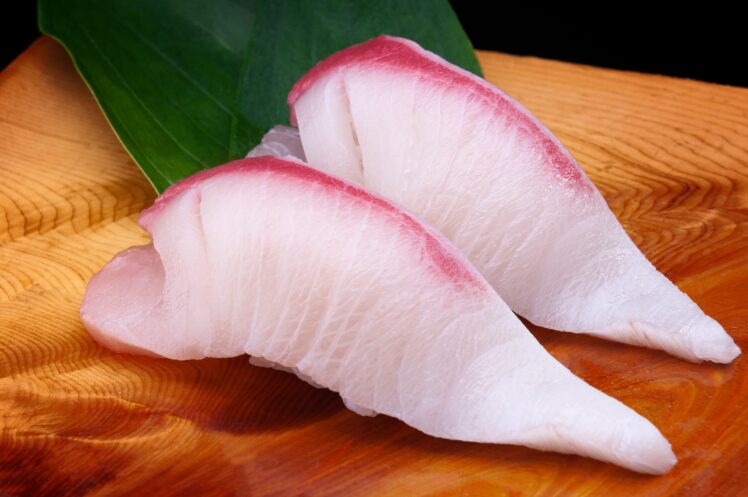
Source: kellyloves.com
Hamachi, fondly known as the Yellowtail Kingfish or the Japanese Amberjack, is a true gastronomic delight. Imagine indulging in a piece of hamachi sushi: the soft, buttery texture of the fish, combined with a slightly sweet, velvety flavor, dissolves effortlessly on your tongue. The delicate melange is beautifully complemented by the somewhat tangy sushi rice, creating a symphony of flavors that dance around your palate.
Hamachi crudo, thinly sliced raw fish, is another popular way to savor this treat. Drizzled with olive oil, a dash of soy sauce, and garnished with fresh herbs, it’s the perfect canvas for culinary exploration. You can almost sense the Pacific Ocean’s crisp, clear waters where this farmed fish originates as you bite into your hamachi sashimi.
Above all, what sets Hamachi apart is its versatility. From the ever-popular yellowtail collar or hamachi kama to the exquisite yellowtail sushi, there’s a hamachi dish for every preference, promising a sensory journey that has made it a star of sushi restaurants worldwide. So, what is Hamachi? It’s more than just a type of sushi-grade fish — it’s an experience, a celebration of taste and texture, and a testament to the culinary finesse of Japanese cuisine.
What Does Hamachi Taste Like?
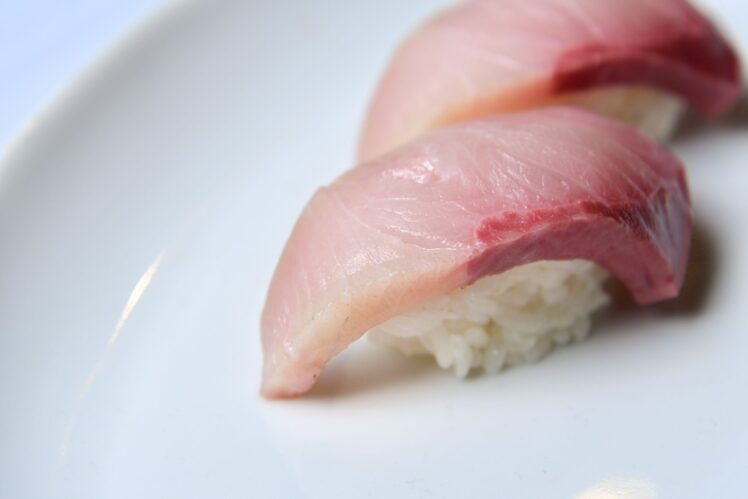
Source: catalinaop.com
Hamachi’s flavor profile is a beguiling blend of finesse and richness. As your teeth break through its silky exterior, you’re immediately greeted by a delicate, buttery taste, a hallmark trait of the yellowtail fish. The sweetness is subtle yet profound enough to tickle your taste buds, painting a vivid gastronomic picture.
Hamachi sushi showcases this flavor beautifully, with the slight tang and warmth of the sushi rice enhancing the fish’s sweetness. When savoring hamachi crudo, olive oil adds a gentle richness, while the soy sauce’s umami character lends depth and complexity.
The sensation resembles a gentle yet exciting ballet of flavors pirouetting across your palate. Even in its simple, raw form, the taste of Hamachi is robust and elegant, reminiscent of the clear, crisp waters of the Pacific Ocean, where it is often farmed.
Whether the yellowtail collar’s richness or hamachi sashimi’s delicacy, this fish always delivers a memorable dining experience. In essence, the taste of Hamachi is a testament to the extraordinary craftsmanship of sushi-grade fish preparation, making every bite feel like a personal invitation to the heart of Japanese cuisine.
What Is the History/Origin of Hamachi?
Hamachi boasts a rich history deeply interwoven into the cultural tapestry of Japan. Known scientifically as Seriola Quinqueradiata, it has been a staple in Japanese cuisine for centuries, hailing from the bountiful waters of the Pacific Ocean. This revered fish was initially consumed only by nobility and royalty due to its luxurious texture and irresistible flavor.
As sushi and sashimi culture blossomed, Hamachi gradually found its way into the hearts and plates of the masses, paving the way for the sushi-grade fish we relish today. The yellowtail collar or ‘Hamachi Kama’ is noteworthy, a prized cut with intriguing lore. It was traditionally reserved for the chef, reflecting its exceptional quality and flavor.
Nowadays, this delicacy graces the tables of sushi restaurants globally, a testament to the enduring appeal of Hamachi. So, It’s a timeless tale of gastronomic tradition, cultural pride, and a shared love for a culinary treasure. It’s more than just fish — it’s a slice of Japanese heritage.
How is Hamachi Served?
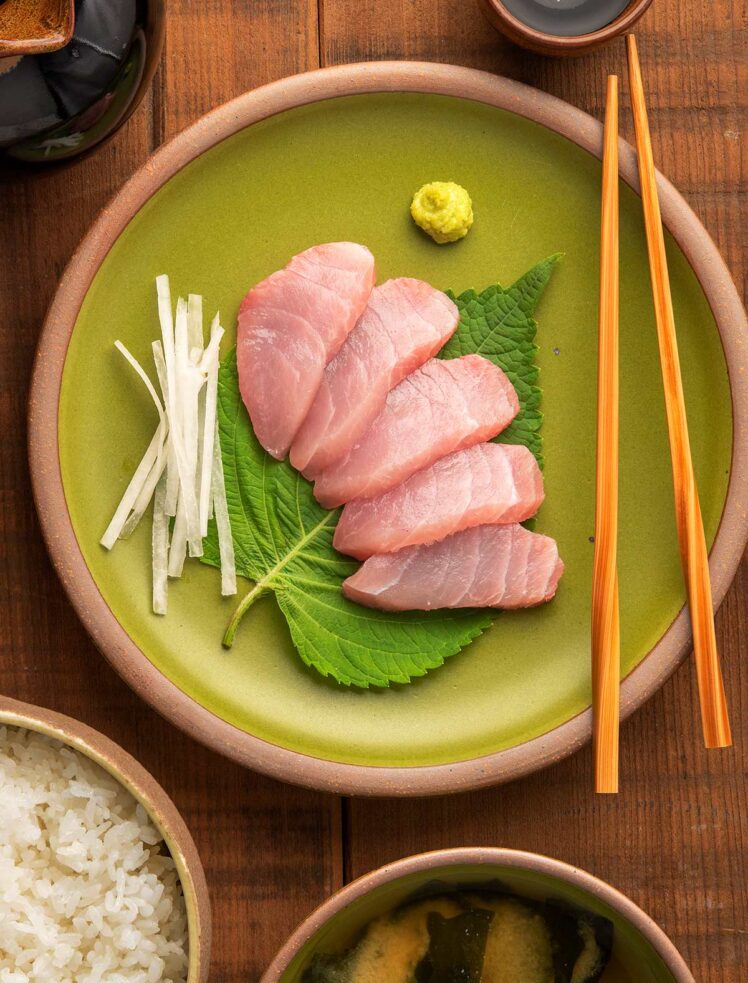
Source: honest-food.net
Step into any sushi restaurant and the sheer variety in which Hamachi is served will amaze you. The dish’s preparation is a testament to the culinary artistry that Japanese cuisine is renowned for. Here are some of the most beloved hamachi dishes:
- Hamachi Sushi: The crown jewel of sushi. Fresh slices of Hamachi are gently pressed onto balls of sushi rice, creating a perfect union of flavors. Each bite is a burst of freshness, a sensory journey that transports you straight to the Pacific Ocean.
- Hamachi Crudo: Raw hamachi slices delicately arranged over a bed of ice. The fish, drizzled with olive oil and a dash of soy sauce, is a harmony of taste and texture. Its simplicity at its finest allows Hamachi’s natural richness to shine through.
- Hamachi Kama: The yellowtail collar, a highly prized cut. Grilled to perfection, the meat is succulent, rich, and beautifully offset by a charred exterior. One bite, and you’ll understand why it was once reserved only for chefs.
- Hamachi Sashimi: The epitome of sophistication, raw slices of Hamachi are served with a side of soy sauce. Each piece melts in your mouth, reflecting the meticulous preparation of sushi-grade fish.
Now, isn’t it time you experienced Hamachi’s exquisite taste and versatility?
How Do You Make Hamachi?
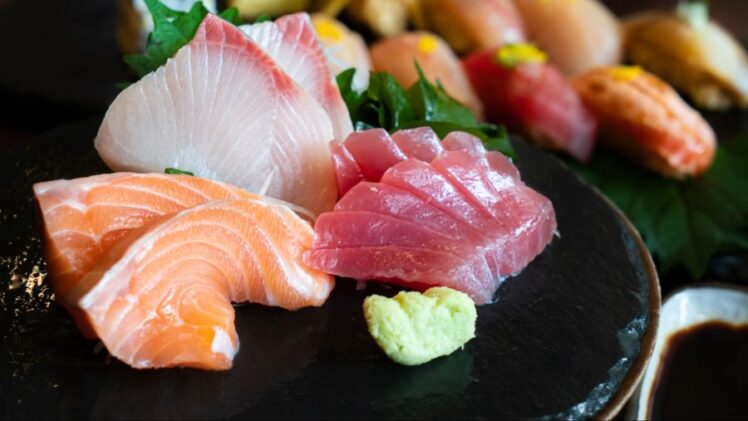
The sacred art of preparing Hamachi is all about embracing simplicity to highlight the fish’s inherent beauty.
- Start by sourcing the freshest Hamachi, or sushi-grade fish, with a gleaming sheen and firm texture. This is the canvas upon which your culinary masterpiece will unfold.
- Next, skillfully slice the Hamachi, maintaining an even thickness for each piece. This isn’t just about aesthetics; it’s also about ensuring a consistent flavor experience with every bite.
- For Hamachi sushi, lightly vinegared sushi rice is shaped into small mounds as a base. The Hamachi slices are then gently pressed onto the rice, marrying the two elements in a delightful harmony.
- If it’s Hamachi sashimi that you’re after, serve the thin slices with a side of soy sauce and a hint of wasabi, allowing each ingredient to enhance the other’s flavor.
- Hamachi Kama, or yellowtail collar, takes center stage for those seeking a warm dish. The collar is seasoned lightly and grilled to perfection, resulting in a beautiful char on the outside, while the inside remains succulent and tender.
Making Hamachi isn’t just about the result; it’s about the journey, the process, and the celebration of a longstanding culinary tradition.
Conclusion
Hamachi is more than just a fish; it’s a gastronomic adventure wrapped in layers of history, culture, and craftsmanship. From its plush, velvety texture to its subtly sweet, buttery flavor, it’s an essential component of Japanese cuisine that offers an unforgettable dining experience.
But preparing Hamachi isn’t as daunting as it might seem if you’ve got the right tools at your disposal. Orderific, our state-of-the-art supplier and procurement solution, simplifies the process, letting you focus on the art of cooking, not the logistics.
With seamless integration, it streamlines your operations, helping you locate quality suppliers for sushi-grade Hamachi and manage your orders efficiently. So why wait? Embark on your own Hamachi adventure today. Schedule a demo with Orderific and see how we can transform your culinary journey.
FAQs
What are the health benefits of eating Hamachi?
Hamachi is rich in omega-3 fatty acids, which promote heart health, improve brain function, and support overall well-being.
Is Hamachi safe to eat raw?
Hamachi is safe to eat raw, provided it has been properly handled and is sushi-grade quality.
Where is Hamachi commonly served?
Hamachi is commonly served in sushi restaurants across the globe, particularly in Japan and the United States.
What are some popular hamachi dishes?
Some popular hamachi dishes include hamachi sushi, Sashimi, crudo, and grilled hamachi kama (yellowtail collar).
How should I store Hamachi at home?
Hamachi should be stored in the refrigerator between 0°C and 4°C and consumed within 2 days for optimum freshness.


